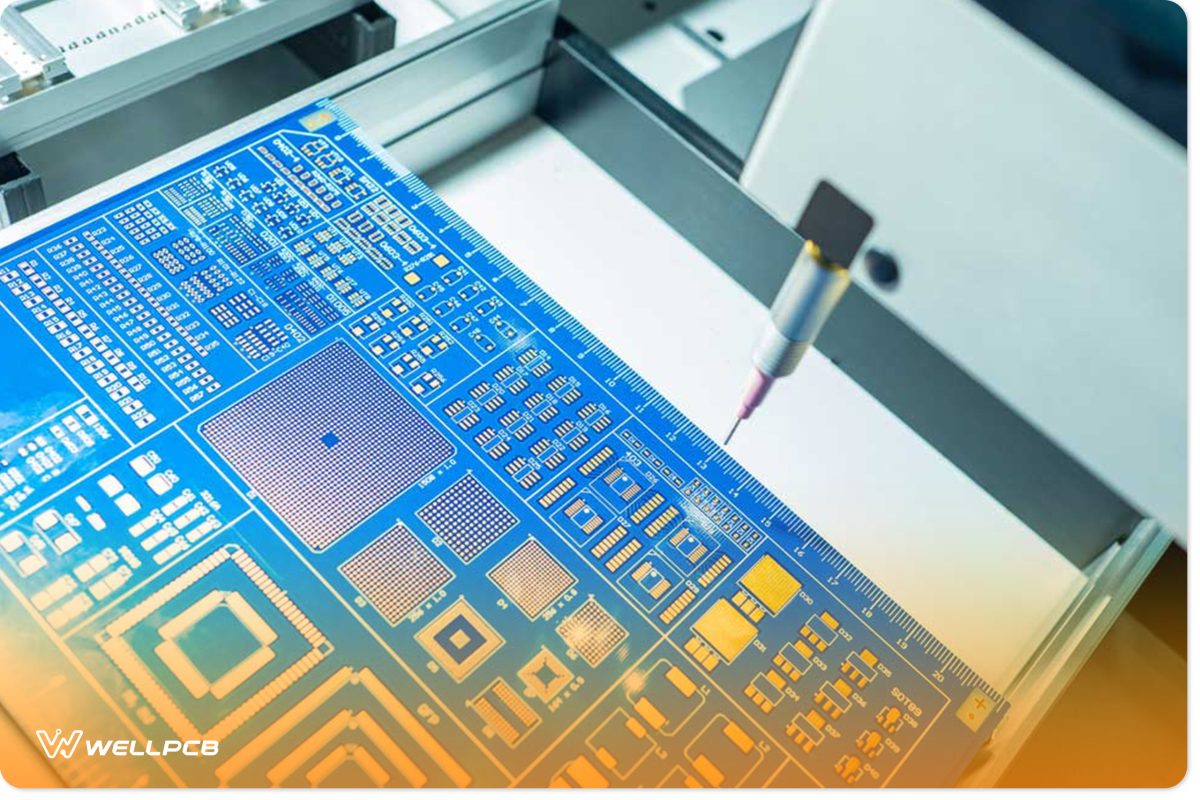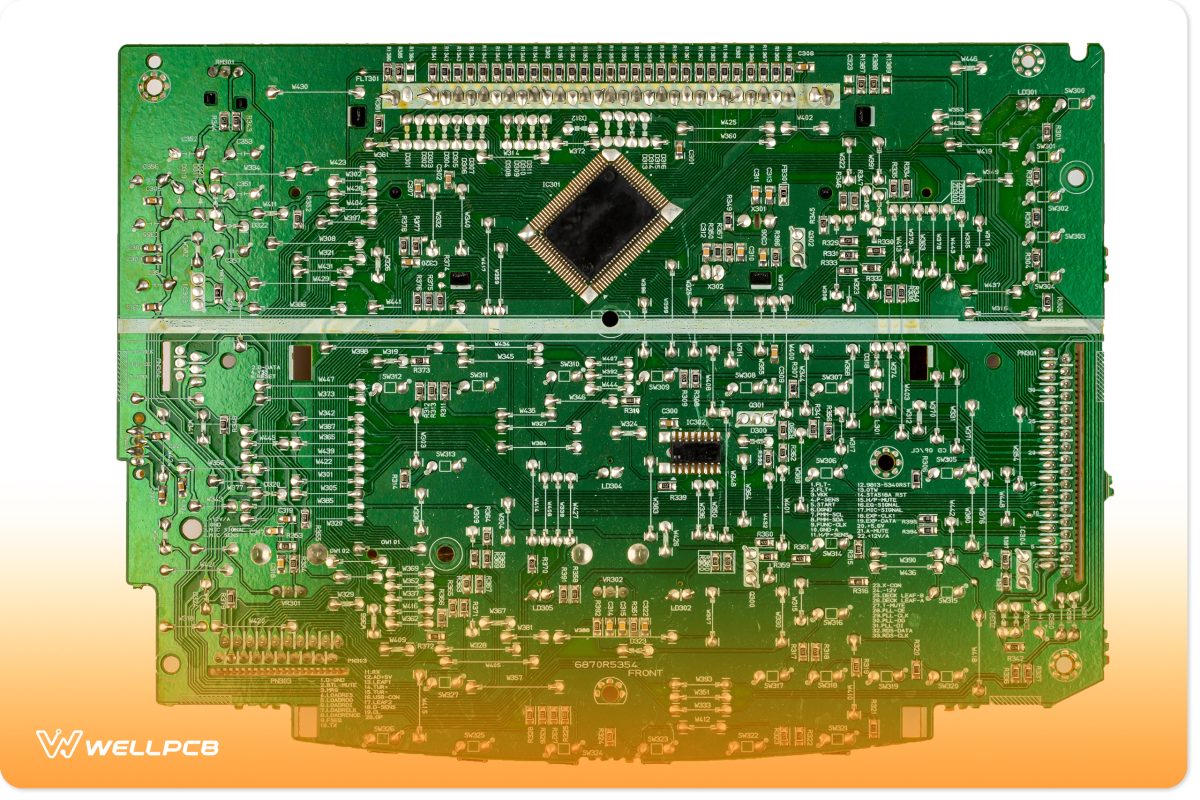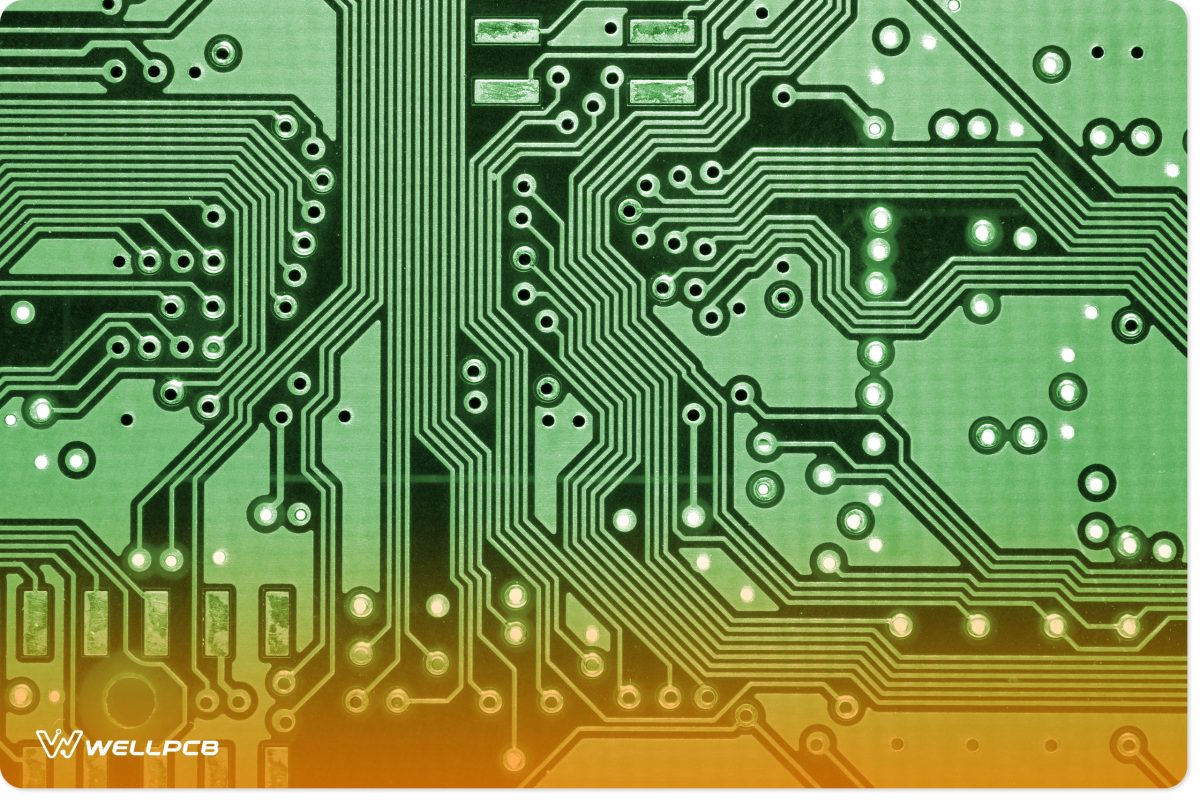Complete PCB–Content
The PCBs in the current electronic products market range from single-layer, double-layer, and multilayer formats. In a multilayer PCB, multiple copper conductive layers are stacked and glued over each other to enhance the signal density and reduce the PCB size. The different layers are etched and separated by the prepreg material and then joined together. The PCB sheet is an insulating sheet of 1 to 2mm thickness coated with copper on one or both sides in the raw form.
The copper is coated over the entire insulator sheet in a small quantity, like 1 to 2 ounces per square foot. In common, the copper thickness varies from 17 to 70µm. The high current sink or source circuits, like power supply circuits, need thicker and wider copper tracks, whereas low-power but high-frequency signals need thinner copper tracks. Therefore, the magnitude of the current flow is determined by the thickness of the board and the width of the copper track.

In the electronics market, various PCBs are produced, categorized by performance, availability, manufacturing facility cost, etc. The insulator material of the PCB, although not conducting, also affects signal health. This is why, for higher frequencies, unique PCB materials are used. For higher frequencies, specially developed low-absorption materials are used.
, Other readily available materials are CEM-3, CEM-4, CEM-5, FR-1, FR-5, Teflon, and the Roger material. In common, FR-4 is used for single, double, and multilayer PCB manufacturing. After manufacturing, an essential qualification phase, the PCBs are inspected for surface-level finishing, solder mask coating, top overlay printing, etc…
Figures 1 and 2 show different types of PCBs.

PCB manufactured for high pin-density components

PCB tracks and vias after etching and finishing of a manufactured PCB





